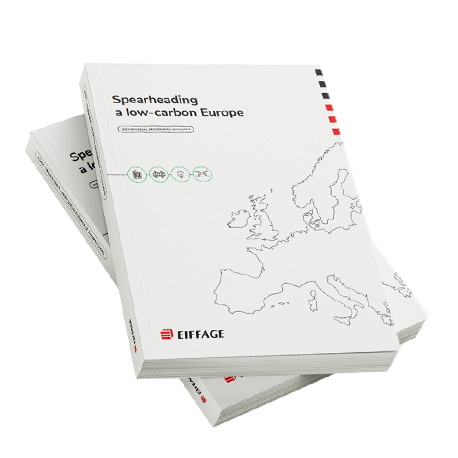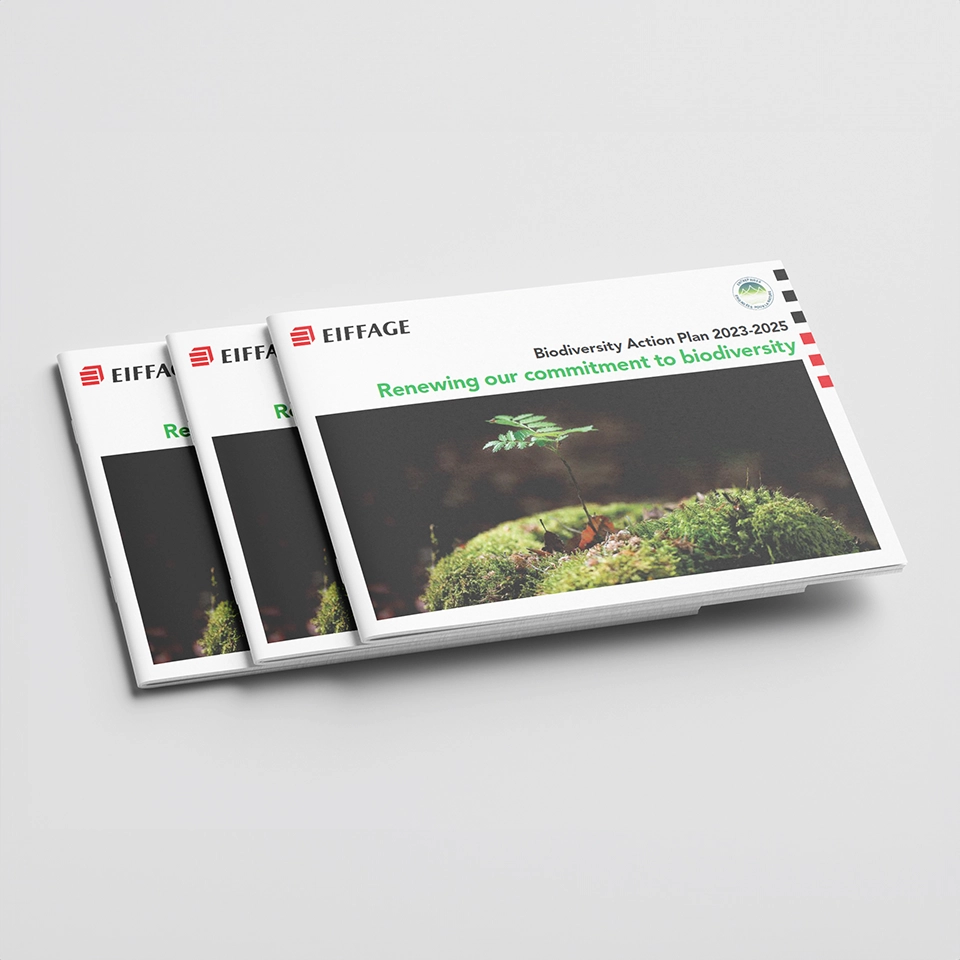Phosphore – the Group’s first sustainable urban development lab
As the world becomes increasingly urbanised, the Eiffage sustainable city R&D lab, known as Phosphore, takes a pioneering approach to urban development by focusing on new construction methods and processes that generate fewer emissions. It takes a genuinely overarching view of sustainable urban development in order to anticipate the most effective ways to adapt towns and cities to the consequences of climate change and social shifts.
Launched in 2007, Phosphore brings engineers throughout the Group together with experts specialised in urban areas, climate and social sciences to imagine a post-carbon future for the city for 2030, as well as the purpose it may serve, how it may change over time and its ability to withstand natural disasters.
Digital demonstrators of the sustainable city – from Astainable® to Urbainable®
Astainable® is a tool used to model the sustainable city in 3D that has earned Phosphore international recognition for its work. Eiffage has gone on to enrich its range of services with a version of the urban design technology, called Urbainable®.
Astainable© – a 3D model of Astana
Eiffage and its partners in the Astainable® consortium have developed 3D modelling technology marketed under the same name. Starting from a complete digital model of the city of Astana, the capital of Kazakhstan, Astainable® takes into account all the specific local factors to apply a wide variety of solutions developed in France, suited to meet the needs of the city and thereby help reduce its environmental footprint. Astana was chosen because it is experiencing considerable urban pressure and is keen to step up the pace of its transition to a sustainable city.
The tool makes it possible to model the way in which the solutions on offer may be used in real life. It now serves to support public- and private-sector entities to present French expertise in sustainable cities, and will ultimately lead to the creation of a French “engineers of the sustainable city” club.
From Libreville to Urbainable©
Building on the success of the Astainable® platform, Eiffage repeated the exercise for Libreville, capital of Gabon.
A number of 3D technical solutions were put forward to respond to the urban and environmental challenges facing Libreville, including urban cable transport to reduce congestion on the roads, ocean thermal energy conversion to generate power and optimised waste management.
By trialling these various solutions, Eiffage was able to refine its version of the sustainable city by putting forwards its registered sustainable urban demonstrator, Urbainable®. It enables Eiffage to fly the flag around the world for its expertise in digital sustainable urban demonstrators.
Application in the real world in major urban development projects
The eco-district Smartseille in the southern French town of Marseille acts as the operational demonstrator of Eiffage’s Phosphore strategy. It offers a systematic approach to sustainable urban development that takes account of all elements of the urban environment (such as energy, construction, transport, uses and environmental services), while also factoring in the consequences of climate change and societal shifts that generate new lifestyles.
In this way, Smartseille embodies the four other “commandments” for an eco-district, as set out by Phosphore.
- Design centred on people and uses
- Respect for territorial specificities or the "spirit of the place”
- Driving innovation via a partnership ecosystem
- Integrating an open-ended project into a fast-changing urban area
LaVallée
Located on a former site of the École Centrale Paris, in Châtenay-Malabry, the future eco-district LaVallée (in reference to the founder of the École Centrale, Alphonse LaVallée) is a nerve centre of low-carbon sustainable innovation.
The project fulfils the requirements for the Eco-district label by applying sustainable urban development in four ways:
- Low-carbon design
- Circular economy
- Nature in an urban setting
- New uses (urban and digital services)
The eco-district, which will be completed in 2024, will boast 2,200 homes, public facilities including a school, a nursery, a middle school and an agricultural area, alongside approximately 30 shops and offices. It will leave a considerable amount of space for nature, with 8 ha of public zones, including a green footpath connecting the Parc de Sceaux to the Coulée Verte.
A large-scale project championing the Group’s overall low-carbon strategy, in the same way as Smartseille, the LaVallée eco-district is the direct operational culmination of the R&D work carried out by the Group’s labs on sustainable cities.

